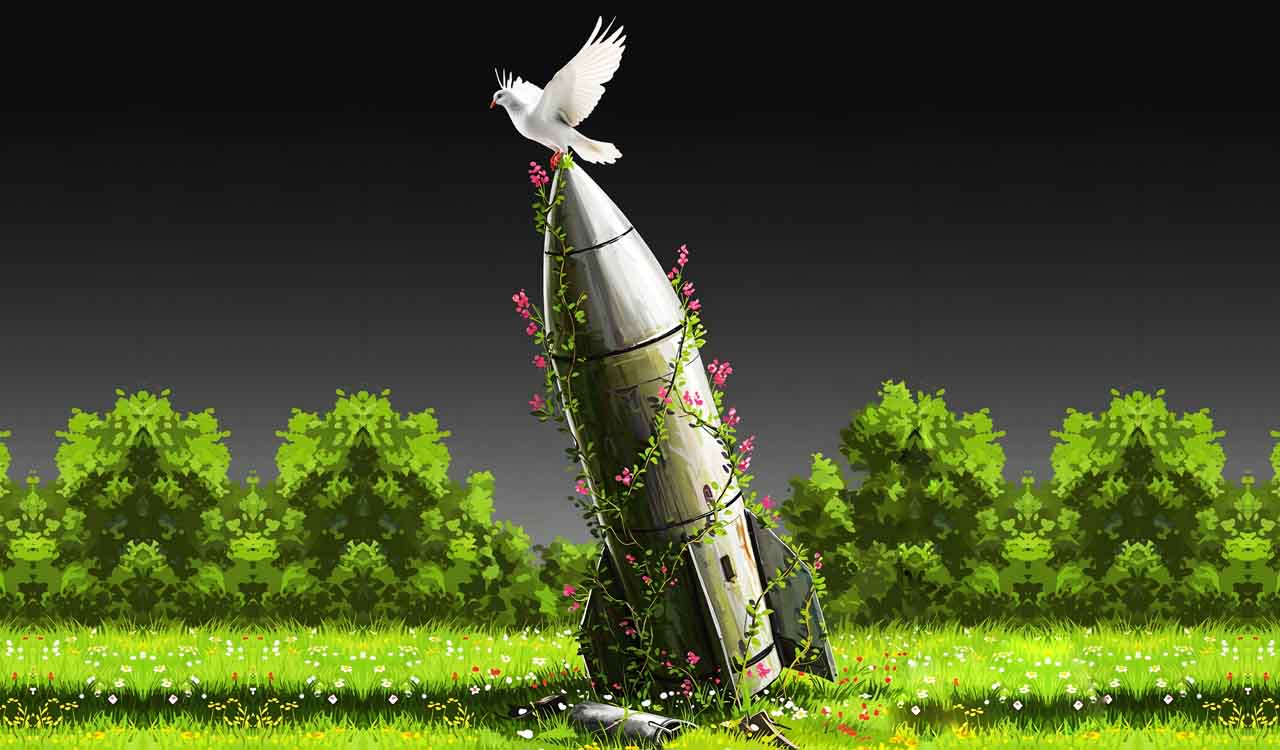It is important that the international community initiates measures for bringing both India and Pakistan under the ambit of Non-Proliferation Treaty
Published Date – 29 May 2025, 08:26 PM

By Col Dr Rajiv Tewari
The Pahalgam terrorist attack created a situation in which the need to bring to justice the perpetrators of the act was strongly felt. The Kashmir militancy dynamics make it difficult to legally bring the perpetrators to face the law of the land. Therefore, the government of India launched an offensive on the known terrorist locations to bring to justice the terrorists in a time frame which exhibits the nation’s will to take cognisance of terrorist violence.
The action taken by the armed forces against the terrorist location was perceived by the Pakistani government as violating their sovereignty and, hence, was reciprocated by counter-action on Indian territory. Drones, missiles and air attacks all across the international border and by both sides were swift and deadly, with Indian forces having an upper hand with precision strikes and an effective Air Defence cover. The damage on the Pakistani side was tremendous and substantial.
Nur Khan Airbase
The Indian attack on Nur Khan Airbase was a strategic strike to disable Pakistan’s capability to launch air strikes on India. However, the attack on 10 May 2025 on the Nur Khan Airbase possibly struck the nuclear assets of Pakistan, with the likelihood of damage to them and the corresponding radiation and its effect in the area. The situation was so serious that Pakistan’s Chief of Army, Gen Asif Munir, had to inform his Prime Minister of the strike on Nur Khan Airbase at 2.30 am.
The next day, 11 May, saw the Pakistan National Command Authority, responsible for taking decisions on the nuclear response, getting activated. Subsequent actions by both countries and the world powers eventually led to the situation being brought under control and a “cease fire” or cessation of hostilities being agreed upon by both countries. However, the condition under which the cessation of hostilities took place was a bit serious as it was in the shadow of the likelihood of a nuclear war between the two countries.
Nuclear Weapons
India and Pakistan possess about 170 nuclear weapons, according to the think-tank Stockholm International Peace Research Institute (SIPRI), which monitors the state of conflict, armaments, arms control and disarmament across the world. Both India and Pakistan acquired nuclear weapon state status in 1974 and 1998, respectively. Although nuclear weapons have never been used by either of the countries in a conflict yet, the safeguards in terms of confidence-building measures between both countries are quite weak and probably non-existent.
India still exhibits responsibility by observing the No First Use Policy in the event of a conflict, which Pakistan doesn’t promise, thereby leaving a psychological window open for taking the first strike against India. The present strife adequately showed the supremacy of the Indian Army in conventional warfare and their ability to hit Pakistani targets. In the event of Pakistan receiving a serious challenge from the Indian Army, the likelihood of it pressing the nuclear button cannot be ruled out.
The Area of Operation of both countries in the present conflict was in the range of 200-300 km from their respective borders. The lack of depth in Pakistan makes the issue more serious as the Pakistani assets are more likely to be hit easily by India as compared to the vast strategic depth available to India, thereby giving an advantage to the latter. In that event, the response by Pakistan cannot be predicted, and the crossing of the nuclear threshold is very much a possibility.
Distant Dream
Since both countries are non-signatories to the Nuclear Non-Proliferation Treaty (NPT), the likelihood of any international safeguard or inspection of respective facilities is non-existent, and disarmament is a distant dream. The accountability of nuclear weapons in India is indeed far higher than in Pakistan, and the likelihood of the weapons falling into the hands of non-state actors being a possibility in Pakistan, makes the situation grave.
The Nur Khan Airbase events make a case for some checks or international supervision on the nuclear assets of Pakistan. The ease with which the Indian missiles ‘hit’ the nuclear storage facilities shows that the safety of weapons in Pakistan is not fool-proof and may get compromised either accidentally, as in the present conflict, or may get into the hands of non-state actors, thereby unleashing a devastating nuclear war.
The nuclear weapon primarily has a deterrent effect on nuclear weapon states, but it is based upon the fact that the use of such weapons is foolproof and is in the hands of political authorities. Even military leaders have no authority to use nuclear weapons. India, being a responsible democracy, does exercise such controls, which are possibly weak or absent in Pakistan.
To obviate the nuclear catastrophe, which incidentally both nations are ill-prepared to face, and the weak control in Pakistan on nuclear assets, it is important that the international community and the world bodies initiate measures for bringing both countries under the ambit of the NPT and make the Indian subcontinent a nuclear-weapon-free zone. Although it is a utopian dream, the present conflict is a wake-up call for it to be pursued, and the process should start in earnest.

(The author is a PhD from Institute for Social and Economic Change, Bengaluru, and has served in the Indian Army. The views are strictly of the author and do not reflect the views of the publication)